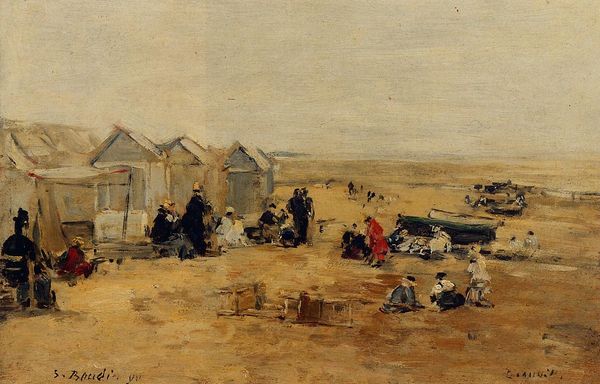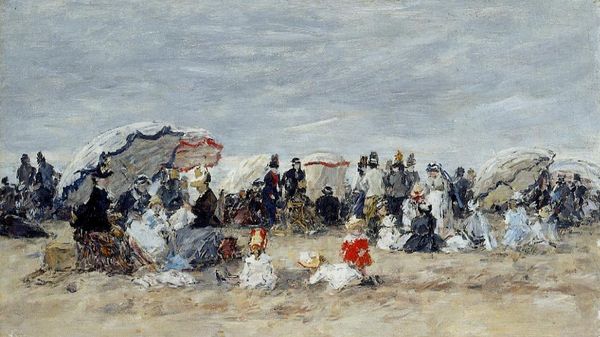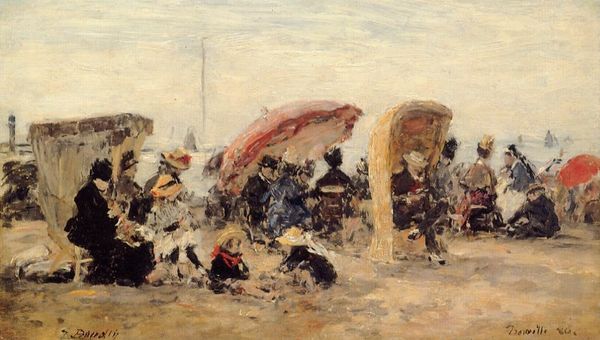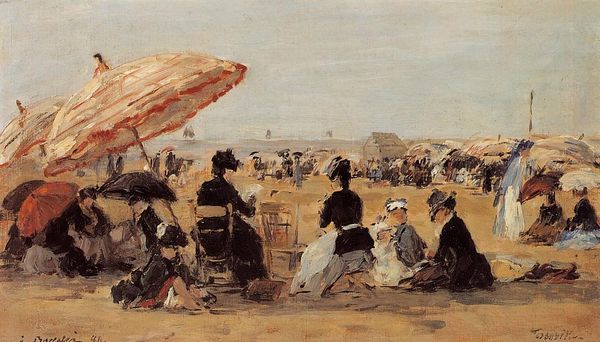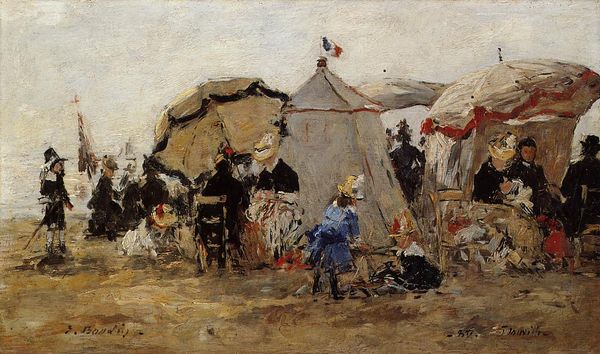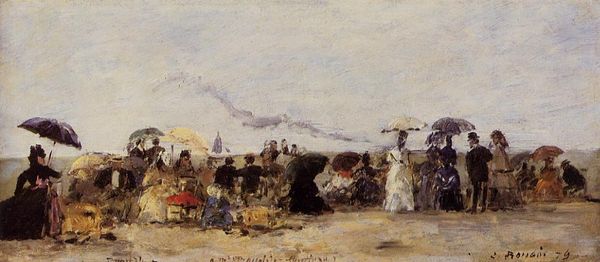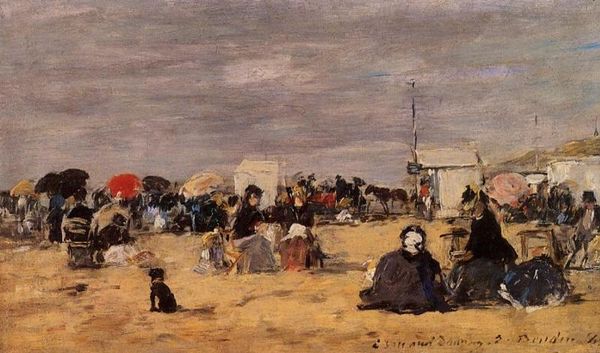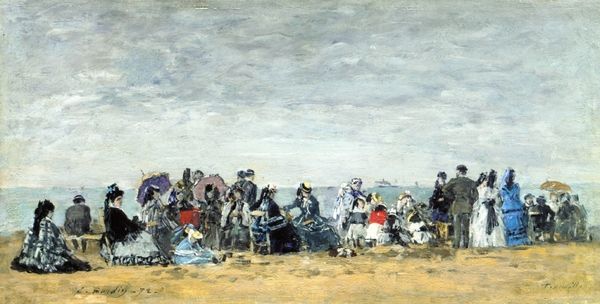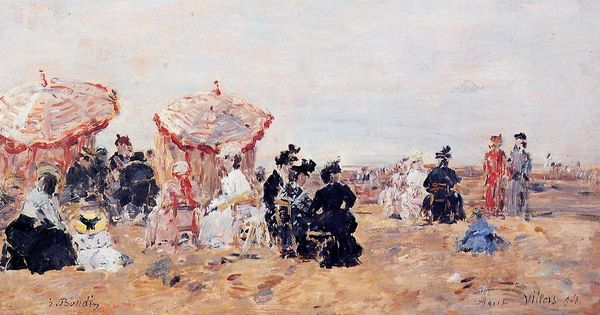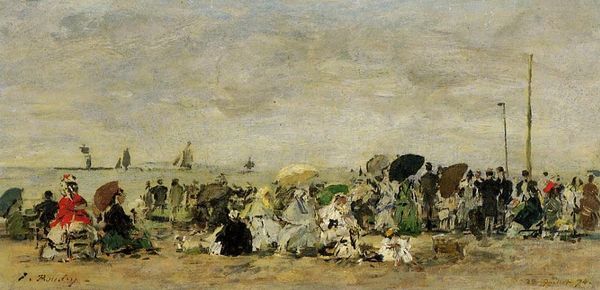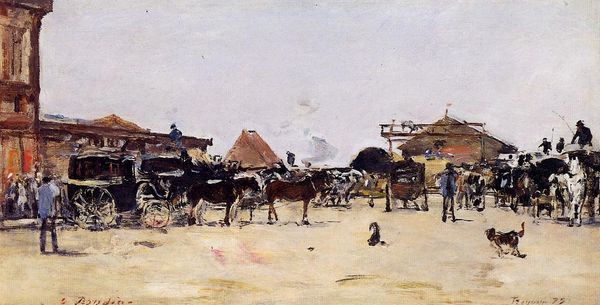
#
abstract painting
#
impressionist landscape
#
possibly oil pastel
#
oil painting
#
fluid art
#
acrylic on canvas
#
underpainting
#
paint stroke
#
painting painterly
#
painting art
Copyright: Public domain
Curator: What strikes me first about Eugène Boudin's "Beach at Trouville" is its apparent haste. A flurry of figures beneath a chaotic burst of parasols, captured, it would seem, with great speed. Editor: Speed, perhaps, but consider how deliberately Boudin layers those rapid strokes. He's building a very specific picture of leisure and industry. Notice how the dark clothing contrasts with the sand – it signals the rising middle class, enabled by new manufacturing processes. Their newfound free time is made possible by the labor of others. Curator: Indeed, and look at how the parasols dominate – sheltering them not just from the sun, but as emblems of status. These aren't just beachgoers; they’re projecting an image. The parasol becomes an almost heraldic symbol, a badge of the bourgeoisie. Editor: And beyond simple status, the mass production of paint itself influences Boudin's ability to portray such fleeting moments. The availability of premixed colors in tubes liberated artists, allowing them to paint en plein air and directly capture the transient effects of light and atmosphere on the Normandy coast. Think about the chemical processes at play there! Curator: Absolutely, but those atmospheric effects—the haze, the light shimmering on the water—they also recall earlier symbolic meanings of the sea: a place of transition, of possibility, but also of unpredictable change. Look how diminutive the people are against that horizon; the power of nature is still subtly present. Editor: Yet it’s how he’s physically manipulating the materials that conveys meaning! The visible brushstrokes themselves become part of the narrative. He’s not just depicting a scene but foregrounding the very act of painting, the work that goes into capturing the leisure of others. Each stroke echoes a certain mode of production. Curator: A production of image, wouldn't you say? He presents a vibrant, idealized tableau of society, yes tied to a complex economic fabric, but still imbued with this symbolic gesture, that constant pursuit for beauty on display. Editor: Fair enough. Ultimately, this small piece provides a snapshot of its era— a visual record of social mobility, emerging industrial practices, and, of course, the evolving function of painting itself.
Comments
No comments
Be the first to comment and join the conversation on the ultimate creative platform.
